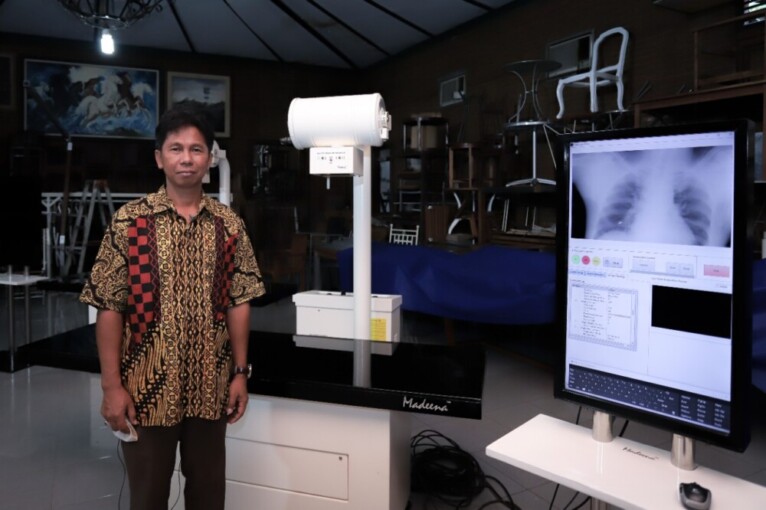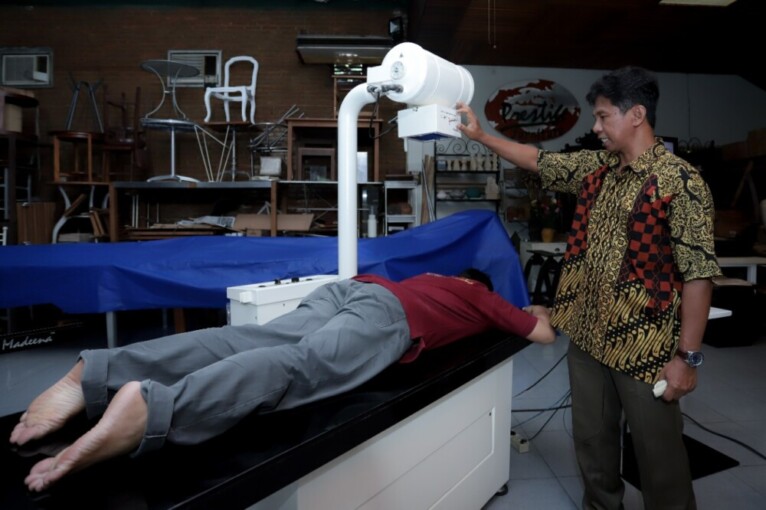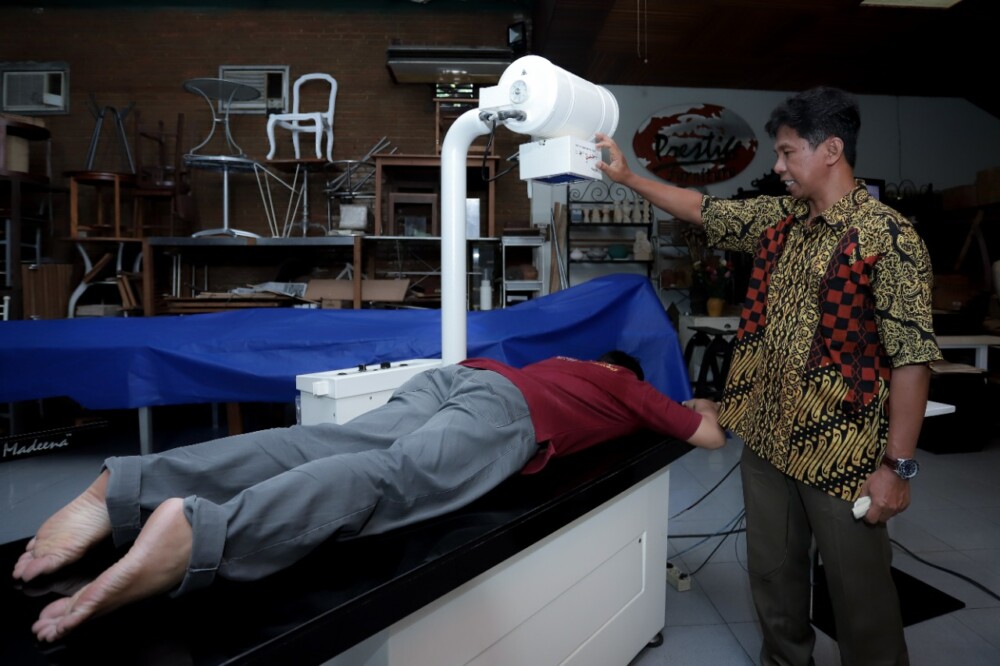The allied health is at the forefront of the response to the Covid-19 pandemic. Currently, the medical team often used only two tools for virus detection; those are rapid tests and PCR tests. From the two detection devices, the level of accuracy of the rapid test was only 30 per cent and PCR 75 per cent. However, there is one more test tool that can detect the level of accuracy of the virus through digital radiography technology developed by UGM Lecturer, Dr. Bayu Suparta. “Digital radiography can prove whether or not the virus is exposed when viewed from the structure of the lungs. When ones are infected to the coronavirus, they will have damaged lungs. In short, through radiography, the accuracy is up to 95 per cent,” Bayu Suparta on Thursday (6/25).
The lecturer in Physics Study Program, Faculty of Mathematics and Natural Sciences UGM said that although technology can detect the accuracy of Covid-19, not all hospitals have this technology. According to him, from 3000 hospitals in Indonesia, only type A hospitals received assistance from the government. “The digital radiography facilitated only in an A-type hospital. From this phenomena, we can predict that digital radiography equipment is rare, so it has become a prominent motivation for me to conduct research on digital radiography equipment at affordable prices,” he said.
Even though he did not want to mention the price for his radiography equipment, Bayu assured that the cost of his radiography equipment was far away cheaper than the same imported foreign material. “I hope, we can be proud of our own innovative products, imagine 9,000 health centres can have it because it is affordable,” he wished.
Bayu said that research on digital radiography research had been done since 30 years ago. His investigation launched 15 years ago, in which he dedicated as UGM’s superior product. However, until now it has not had time to be eliminated until President Joko Widodo finally launched it along with dozens of other innovative products used to help deal with the Covid-19 outbreak on May 20 at the State Palace. “It was not joking when someday it was launched. The team and I worked hard to develop this tool,” he said.
Until now, said Bayu, there have been three digital radiography devices he made that have been produced to obtain production permits, marketing licenses and trials to users. Using the brand Madeena or Made in Ina (Indonesia), Tabanan Bali Hospital has used this tool. Then the other two devices are used as a prerequisite for the process of getting a mass production permit. “I fully submit the downstream and commercial issues to the government and health sector stakeholders. We have applied for a production permit and distribution permit. Moreover, there is an urge from the President to simplify the step in the permission of Covid-19 innovation products,” he said.
Concerning Covid’s detection capabilities, Bayu believes his device is very capable of determining and identifying the prognosis of patients affected by covid. In fact, in the operation of the equipment, according to him, it is very adaptive with technology 4.0 and very safe for patients and medical staff. “Very safe for patients because the radiation dose is made as low as possible. A computer controls this tool, then X-rays emit into the patient’s body, the radiation canal is captured by the detector and connected to the monitor screen, then processed by the radiographer given to medical physics. After that, it will be transferred digitally to the doctor as requested,” he said.
One of the benefits of this digital radiography tool, according to Bayu, it can be connected to extensive data. As long as the hospital or health centre has internet access, it can check the radiographic results of patients remotely when it compared to the health system at each health care centre.
Author: Gusti Grehenson
Translator: Natasa A





